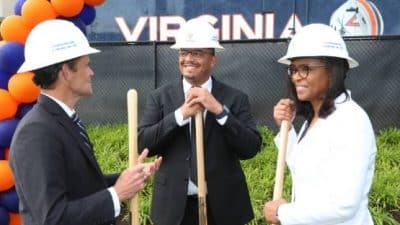
[email protected]
Good news for farming, sorta, kinda: The Virginia Department of Agriculture and Consumer Services reported today that loss of farmland to development appears to be slowing in the Commonwealth.
According to the recent numbers from the Farmland Information Center, between 1997 and 2002, Virginia lost 81,500 acres of agricultural land directly to developed uses. That loss of agricultural land slowed, however, to 60,800 acres between 2002 and 2007.
A similar trend occurred when looking at other rural lands as well. When looking at agricultural land, forestland and other rural lands combined, Virginia lost 274,900 acres directly to developed uses between 1997 and 2002, but only 206,700 acres between 2002 and 2007.
These numbers were developed based on the 2007 National Resources Inventory. The 2007 NRI is the latest in a series of natural resource inventories conducted by the National Resources Conservation Service, providing updated information on the status, condition and trends of land, soil, water and related resources on non-federal lands across the country.
“On one hand, the recent state-level data from the NRI is heartening because it illustrates that the rate of farmland lost to development in the commonwealth has slowed,” said Matt Lohr, commissioner of the Virginia Department of Agriculture and Consumer Services. “On the other hand, the loss of vital working farm and forest land continues, and we remain concerned about the implications of this loss given the many benefits of our working lands to Virginia.”
Farming and forestry combined remain Virginia’s number one industry, accounting for a total economic impact of $79 billion in 2006, according to a recent report conducted by the Weldon Cooper Center for Public Policy at the University of Virginia. The report also found that every job created in agriculture and forestry related industries results in another 1.5 jobs in the Virginia economy, and every dollar generated in value-added results in another $1.75 value-added.
Farm and forest land also has a positive impact on the fiscal health of localities in Virginia. At least 128 Cost of Community Services studies have been conducted across the United States, six of which were conducted in Virginia, demonstrating that farm and forest land requires little or no costly public services and generates more in taxes than it requires in services. In addition to the economic benefits, well-managed farm and forest lands also produce significant environmental benefits such as green spaces, wildlife habitat and scenic views.
Recognizing the growing concern about the loss of working land in Virginia, the General Assembly established the Office of Farmland Preservation (OFP) within VDACS in 2001. Since opening in January 2007, OFP has worked to protect productive farmland and to ensure that agriculture remains viable in the commonwealth. OFP has been helping establish local Purchase of Development Rights (PDR) programs that protect working farm and forest land by paying landowners for permanently preserving their land with a conservation easement. Twenty-one localities have established such programs to date. Since February 2008, OFP has allocated $5.15 million in state matching funds appropriated by the General Assembly to 16 of these local PDR programs. To date, $4.2 million of these funds has been used by 11 localities to help protect 3,652 acres of working farm and forest land.
Farmers and localities desiring more information about the recent NRI data and the Office of Farmland Preservation should contact Kevin Schmidt, Coordinator, Office of Farmland Preservation, Virginia Department of Agriculture and Consumer Services, 102 Governor St., Richmond VA 23219 or call 804.786.1346 or e-mail [email protected].










